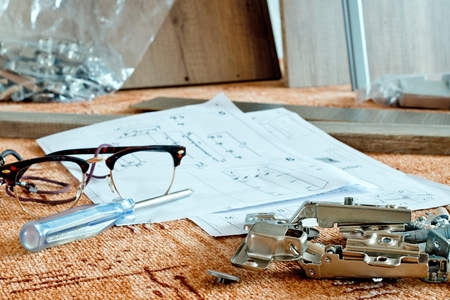1. Understanding the Benefits of Smart Home Integration
When planning a living room renovation, incorporating smart home features can take your space to the next level. Whether youre aiming for a modern vibe or simply want more convenience, smart technology can transform how you live and interact with your home every day.
Convenience at Your Fingertips
Smart home devices are designed to make everyday tasks easier. Imagine adjusting your lighting, temperature, or even your window shades—all from your smartphone or through voice control. With tools like smart speakers, universal remotes, and automation systems, managing your living room becomes effortless.
Improved Energy Efficiency
Smart thermostats and lighting systems help you reduce energy consumption by learning your habits and adjusting automatically. Over time, this not only helps the environment but also lowers your utility bills.
| Smart Feature | Energy-Saving Benefit |
|---|---|
| Smart Thermostat | Learns your schedule and adjusts heating/cooling accordingly |
| Smart Lighting | Dims or turns off lights when not in use |
| Smart Plugs | Cuts power to idle electronics automatically |
Enhanced Security Features
Security is another key benefit of smart integration. Motion sensors, indoor cameras, and smart locks can all be part of your living room setup. These devices allow you to monitor activity remotely and receive alerts if something unusual happens—giving you peace of mind whether youre at home or away.
Boosting Home Value
Adding smart features to your living room isn’t just about comfort—it’s also an investment. Today’s homebuyers are looking for connected homes that offer both functionality and innovation. A well-equipped smart living room can increase the appeal and resale value of your property.
Top Smart Features That Add Value:
- Voice-activated lighting systems
- Integrated entertainment controls
- Automated blinds or curtains
- Smart climate control systems
- Security cameras with remote access
By understanding the benefits of integrating smart technology into your living room renovation, youll be better prepared to plan a space thats not only stylish but also smarter and more efficient.
2. Planning Your Smart Living Room Layout
Before installing any smart home features, it’s essential to carefully plan your living room layout. A smart living room should blend technology seamlessly into your everyday life without disrupting the aesthetics or comfort of the space. This step is all about making sure each device—whether its a smart speaker, lighting system, thermostat, or entertainment hub—has a designated place that maximizes its functionality and ease of use.
Assess Your Current Space
Start by evaluating your current living room setup. Take note of furniture placement, power outlet locations, and how you typically use the space. Ask yourself questions like:
- Where do people usually sit and gather?
- Which areas need better lighting?
- Are there any dead zones for Wi-Fi coverage?
Create a Tech-Friendly Floor Plan
A well-thought-out floor plan ensures that all your devices are both accessible and functional. For example, placing a smart speaker too close to the TV might cause interference with voice commands. Similarly, a thermostat placed behind furniture won’t be able to regulate temperature efficiently.
Example Layout Considerations
| Device | Ideal Placement | Why It Matters |
|---|---|---|
| Smart Speaker (e.g., Alexa, Google Nest) | Centrally located on an open surface | Ensures clear voice recognition from different parts of the room |
| Smart Lighting (e.g., Philips Hue) | Around seating areas and entry points | Adds ambiance and convenience when entering or relaxing in the room |
| Smart Thermostat (e.g., Nest) | An interior wall away from direct sunlight or vents | Makes temperature readings more accurate and efficient |
| Smart TV & Entertainment System | Main viewing wall with proper cable management access | Keeps wires hidden and integrates well with streaming devices |
Cable Management & Power Supply
No one wants a mess of tangled cords ruining their sleek new setup. Use cord concealers, in-wall cable kits, or furniture with built-in wire management to keep everything tidy. Also consider adding extra outlets or USB ports where needed so you can plug in devices without overcrowding existing plugs.
Aesthetic Integration Tips
Your smart devices should enhance—not detract from—your living rooms style. Choose products that match your decor, like matte black smart switches for modern interiors or wood-trimmed smart speakers for a cozy vibe. Some devices even offer interchangeable covers to better fit your color scheme.
A Few Style-Friendly Device Ideas:
- Lamps with built-in smart bulbs: Blend function and form effortlessly.
- Sleek soundbars: Combine high-quality audio with minimalist design.
- Pictorial frame TVs: Act as digital art when not in use.
The key to planning your smart living room layout is balancing tech convenience with thoughtful design. When done right, you’ll have a connected space that feels just as comfortable as it is cutting-edge.

3. Choosing the Right Smart Devices for Your Lifestyle
When renovating your living room with smart home features, choosing the right devices is key to creating a space that fits your lifestyle. Whether youre streamlining daily routines or enhancing comfort and entertainment, its important to select products that are compatible with each other and easy to use.
Start with a Smart Hub or Voice Assistant
A smart hub or voice assistant acts as the brain of your living rooms smart system. It helps you control multiple devices from one platform—often just by using your voice. Popular choices in the U.S. include:
| Device | Main Features | Compatible Ecosystems |
|---|---|---|
| Amazon Echo (Alexa) | Voice control, routines, wide device compatibility | Works well with Ring, Philips Hue, SmartThings |
| Google Nest Hub | Voice commands, touchscreen display, Google services integration | Best with Nest products, Chromecast, and Google Home-compatible devices |
| Apple HomePod mini (Siri) | Siri voice control, seamless Apple ecosystem integration | Ideal for users already using iPhones, iPads, and HomeKit devices |
Select Smart Devices That Match Your Daily Routine
The best smart home setup is one that makes your life easier. Think about how you spend time in your living room—do you watch TV often? Do you like adjusting lighting based on the time of day? Here are some popular options to consider:
#1: Smart Lighting
Dimmable smart bulbs or LED strips let you set the mood with color changes and brightness levels via app or voice command.
#2: Smart Thermostats
If your HVAC system extends to the living room, a smart thermostat can learn your preferences and adjust temperature automatically for comfort and energy savings.
#3: Automated Window Treatments
Simplify light control and privacy with motorized blinds or shades that can be scheduled or controlled remotely. These are perfect for movie nights or reducing glare during the day.
#4: Entertainment Systems with Smart Integration
Add a smart TV or streaming device that works with your chosen hub so you can control everything—from Netflix to volume—by voice or through an app.
Create a Cohesive Ecosystem
A smooth smart living room experience depends on having devices that communicate well together. Try to stick within the same ecosystem—for example, if you start with Amazon Alexa, choose additional products labeled “Works with Alexa.”
TIPS FOR COMPATIBILITY:
- Check labels: Look for “Works With” badges on packaging.
- Avoid mixing ecosystems: It’s easier to manage fewer platforms (e.g., all Google or all Alexa).
- Create routines: Set up automations like “Movie Time” that dim lights and close blinds at once.
Selecting the right combination of smart devices will make your living room not only more functional but also more enjoyable every day.
4. Ensuring Seamless Integration with Existing Systems
When adding smart home features to your living room, its important to make sure they work smoothly with your current setup. The goal is to upgrade without tearing down walls or redoing your entire wiring system. Here’s how you can easily integrate smart technology into your existing space.
Check Your Home’s Wi-Fi Strength
Most smart home devices rely on a strong and stable internet connection. Before installing anything, test the Wi-Fi signal in your living room. If it’s weak, consider getting a mesh Wi-Fi system or a range extender to ensure reliable connectivity for all your new gadgets.
Understand Your Current Wiring
You don’t need to rewire your entire living room to enjoy smart technology. Many devices are plug-and-play or battery-operated. For example, smart plugs, bulbs, and voice assistants can be set up without any hardwiring.
Smart Device Installation Types
| Device | Installation Type | Requires Rewiring? |
|---|---|---|
| Smart Light Bulbs | Screw into existing fixtures | No |
| Smart Thermostats | Wired to HVAC system | Maybe (depends on model) |
| Smart Plugs | Plug into wall outlet | No |
| Smart Speakers/Displays | Plug into power source & connect via app | No |
| Smart Switches | Replace traditional switch | Yes (basic electrical work) |
Match Smart Tech with Your Décor Style
Today’s smart home products come in sleek designs that blend well with modern or traditional styles. Choose neutral colors or hidden installations to keep your space looking cohesive. Some smart speakers and hubs even offer fabric covers or wood finishes to better match your furniture.
Create Centralized Control Without Clutter
A great way to keep things tidy is by using a smart home hub or integrating everything through a smartphone app like Google Home or Apple HomeKit. This way, you won’t have multiple remotes or switches cluttering your coffee table.
Troubleshooting Tips for Easy Integration
- If a device isn’t connecting, double-check that it supports your Wi-Fi frequency (2.4 GHz vs 5 GHz).
- Make sure firmware and apps are updated before setup.
- If youre unsure about wiring, hire a licensed electrician for safe installation.
By taking these simple steps, you can enjoy the benefits of smart home technology in your living room without major renovations or stress.
5. Working with Professionals for a Future-Proof Renovation
When adding smart home features to your living room renovation, working with experienced professionals is one of the smartest moves you can make. While some devices may seem easy to install on your own, the truth is that a fully connected and efficient smart living room requires careful planning, proper wiring, and technical know-how. Collaborating with licensed contractors and tech experts ensures your renovation is done right the first time—saving you time, money, and headaches down the road.
Why Professional Help Matters
Smart home systems involve more than just plugging in a few gadgets. You need to consider power supply, Wi-Fi strength, compatibility between devices, and future scalability. A contractor familiar with smart installations can coordinate necessary electrical work and suggest structural changes that support hidden wiring or device integration. At the same time, a tech specialist can help set up ecosystems like Amazon Alexa, Google Home, or Apple HomeKit so everything works together seamlessly.
Benefits of Hiring Smart Home Professionals
| Benefit | Description |
|---|---|
| Error Prevention | Reduces the risk of faulty installations that could damage equipment or require costly rework. |
| System Compatibility | Ensures all devices are compatible with each other and integrated into a central control system. |
| Future Scalability | Makes it easier to upgrade or expand your system later without needing major renovations again. |
| Optimized Network | Helps plan Wi-Fi coverage and bandwidth usage for optimal performance of connected devices. |
What to Look For in a Smart Home Contractor
When hiring professionals for your smart living room renovation, look for those who have:
- Experience with low-voltage wiring and home automation setups
- Knowledge of various smart home platforms (like Zigbee, Z-Wave, or Matter)
- A portfolio or references from previous smart home projects
- The ability to collaborate with interior designers and electricians as needed
Plan Early in Your Renovation Process
The earlier you bring professionals into your project, the better. Ideally, smart home planning should happen during the design phase—not after drywall goes up. This allows for easier cable routing, placement of hidden sensors or speakers, and custom electrical work to be completed efficiently.
By working closely with the right experts, you can turn your living room into a modern hub that not only looks great but also functions beautifully—today and well into the future.


